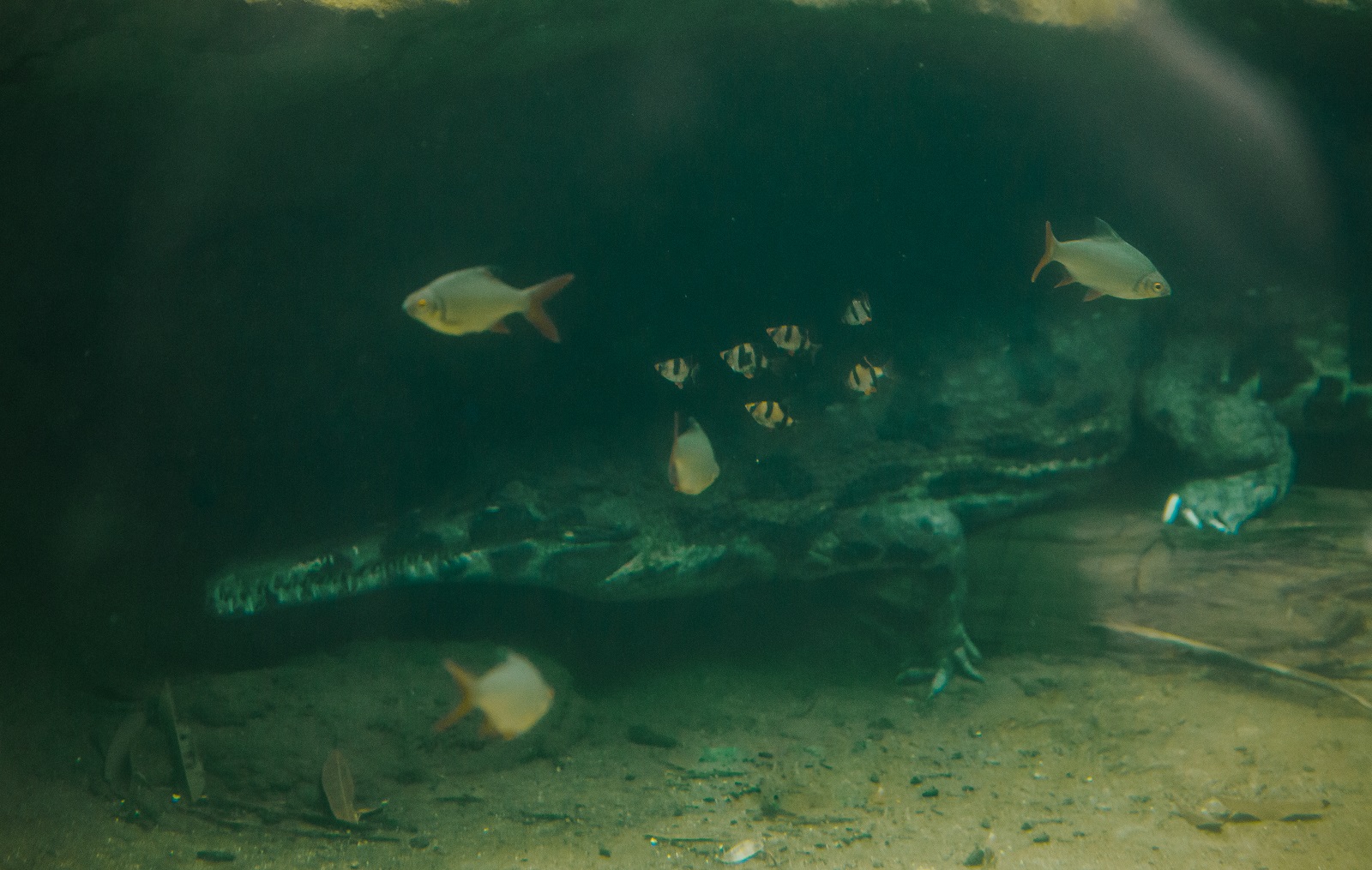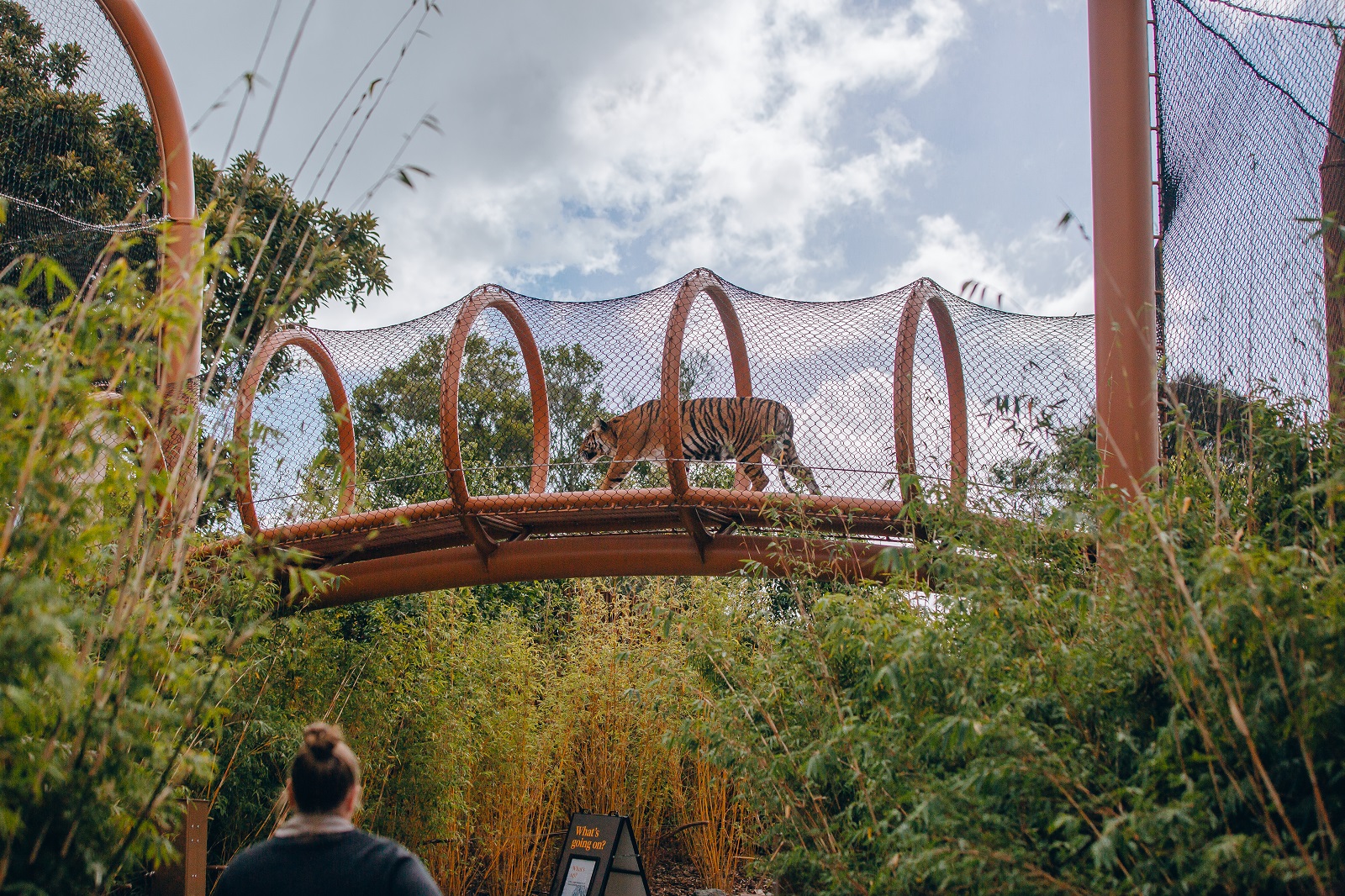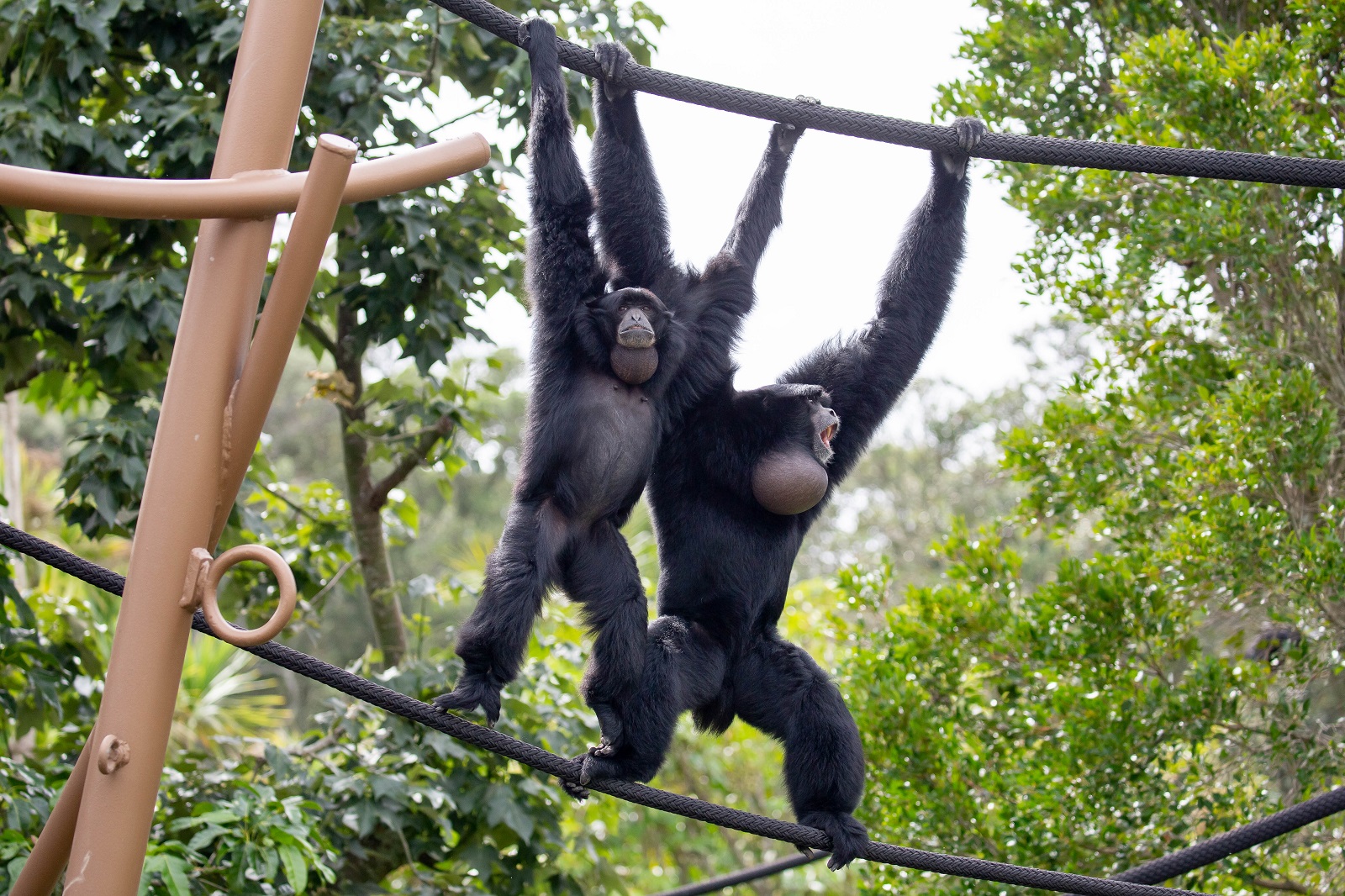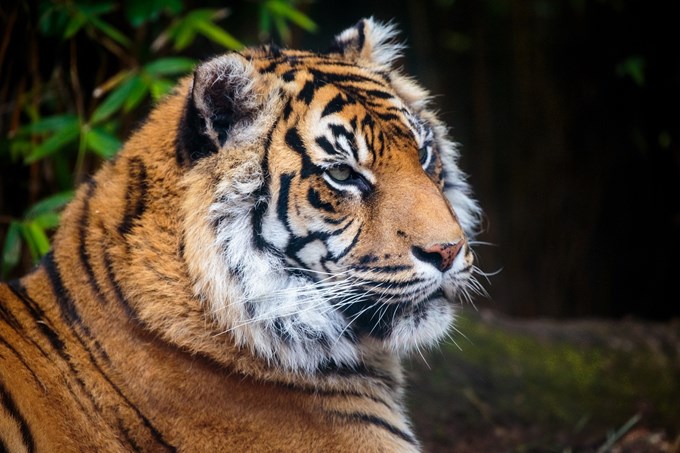Auckland Zoo is thrilled to be welcoming visitors to their groundbreaking new South East Asia Jungle Track. Five years in the making, this incredible project has transformed one-fifth of the Zoo’s generous grounds to create several interconnecting animal habitats.
There’s a high canopy where the orangutans and siamangs feel right at home, a lowlands habitat for Sumatran tigers and Asian small-clawed otters, and an Indonesian swamp forest for Sunda gharial crocodiles and a rich diversity of South East Asian fish species – there’s even a lake.
This immersive attraction is a world first, providing visitors with a deeper sense of connection with nature and insight into the wildlife of one of the most diverse and threatened places on Earth.
But how exactly do animals from other countries make their way to Aotearoa? To learn about the challenges of bringing wild creatures halfway across the world, we spoke to some of Auckland Zoo’s most experienced keepers.
Crocs on a plane
In October this year, a pair of Sunda gharial crocodiles moved into the Zoo’s new swamp forest habitat – a journey that started in late August when ectotherm keeper Julie Underwood went to Krokodille Zoo in Denmark.
“I went to meet 12-year-old sisters Malu (Indonesian for ‘shy’) and Sumpit (Indonesian for ‘chopsticks’), who are both over 3m long and weigh 70-85kg,” she says. “Then I oversaw them being caught up and placed in their high-spec crates.”

Julie explains that because crocodiles breathe air and are very energy efficient unless actively hunting, they don’t need to be transported in water, which makes moving them more straightforward than transporting primates or mammals.
“The crocodiles were perfectly comfortable inside their padded crates, which were designed so they don’t turn and get stuck or damage themselves. It’s also crucial that they don’t turn in transit, because we need to know which end is the head and which is the tail when we open the crates.”
Another reason transporting ectotherms is relatively simple is that they can go long periods without food. “This meant we could stop feeding them 10 days ahead of their flight, to avoid them regurgitating and possibly choking, although they were well hydrated before they set off.”
When the crocodile duo arrived on 7 September, they were quarantined for a month in the swamp forest’s climate-controlled back-of-house pool. Now happily ensconced in their new home, Julie says the sisters are settling in well.
“It’s fantastic to now see visitors enjoying experiencing them, both underwater and on the banks of this stunning new river habitat we’ve created, which is unlike any zoo crocodile habitat in the world,” adds Richard Gibson, head of animal care and conservation.

Tiger takeover
Moving big cats also takes a lot of planning, and the first Sumatran tiger to move into the Zoo’s new lowlands habitat was 14-year-old Sali from Hamilton Zoo in April 2022.
In November 2022, the Zoo also welcomed two young Sumatran tigers from zoos in the United States. Five-year-old male Ramah from Oklahoma City Zoo and four-year-old female Zayana from Topeka Zoo & Conservation Center in Kansas arrived at the start of the month, and are now settling into the South East Asia Jungle Track lowlands habitat.
“As keepers we’re absolutely fizzing to have Sumatran tigers back at Auckland Zoo after a more than three-year absence,” says carnivore keeper Nick Parashchak, who spent time at Hamilton Zoo ahead of Sali’s move. “They’re an extraordinary species and will be fantastic advocates for their critically endangered cousins in the wild.”
Carnivore team leader Lauren Booth describes the tigers’ new home as an incredibly dynamic and enriching space for these primarily solitary big cats.
“A real highlight as they settle in will be seeing how they explore and use the three different spaces within our amazing new tiger habitat.
"They’ve got such a diversity of terrains and habitat features – with the ability to be up high on the bridges and high ridges, cool off in the pool and waterfall and beach areas, or rest and shelter in outdoor dens or in the shade of bamboo stands.”
“This habitat’s design, which provides us keepers with such great flexibility in the way we can care for and manage these cats, enables Ramah and Zayana to be able to patrol the different areas of their territory – just as these solitary cats would do in the wild. They’ll come across each other’s smells and scents, scat (faeces) and footprints, as well as tiger Sali’s.
“When up high, as well as being above visitors, they’ll also have the enriching experience of spotting other wildlife – like the otters in their adjoining lowlands habitat, and the orangutans and siamangs when they’re up on their aerial pathways over the lake,” explains Lauren.



